Let’s be real. You want to get stronger, feel more energetic, and build a body you’re proud of. But the thought of the conventional gym? It’s enough to kill your motivation before you even start.
The crowded weight room, the awkward wait for the squat rack, the sticky benches, the monthly fee draining your bank account… not to mention the commute. It’s a gauntlet of friction that stands between you and your fitness goals.
What if I told you that you could build a fortress of fitness right within your own four walls? Even if you live in a small apartment, a dorm room, or a house with zero extra space.
This isn’t about compromise. This is about being smarter. It’s about creating an effective, versatile, and ultimate home gym setup that fits your life, your space, and your budget. Forget the fantasy of a sprawling garage gym. We’re building something better: a lean, mean, muscle-building machine in a corner of your room.
Welcome to your blueprint for fitness freedom.
Table of Contents
The Real “Secret” to Fitness Isn’t the Equipment
Before we dive into the gear, let’s talk about the most important piece of equipment: your mind. The goal of a home gym isn’t just to own stuff; it’s to eliminate excuses.
The biggest killer of progress is inconsistency. Life gets busy. You’re tired after work. It’s raining. The gym is too far. A home gym destroys these excuses. Your commute is 30 seconds. It’s always open. And the only person you have to impress is the man in the mirror.
Building this setup is an investment in your discipline, your health, and your time. It’s about taking control. Now, let’s get you the tools to do it.
The 9 Essential Pillars of Your Compact Gym
We’re focusing on versatility, durability, and a small footprint. Each piece on this list is chosen because it delivers the maximum bang for your buck in terms of the number of exercises you can do.
Piece #1: Adjustable Dumbbells
If you only buy one thing on this list, make it this. A full rack of dumbbells can take up an entire wall. A pair of quality adjustable dumbbells gives you the same functionality in the space of a shoebox.
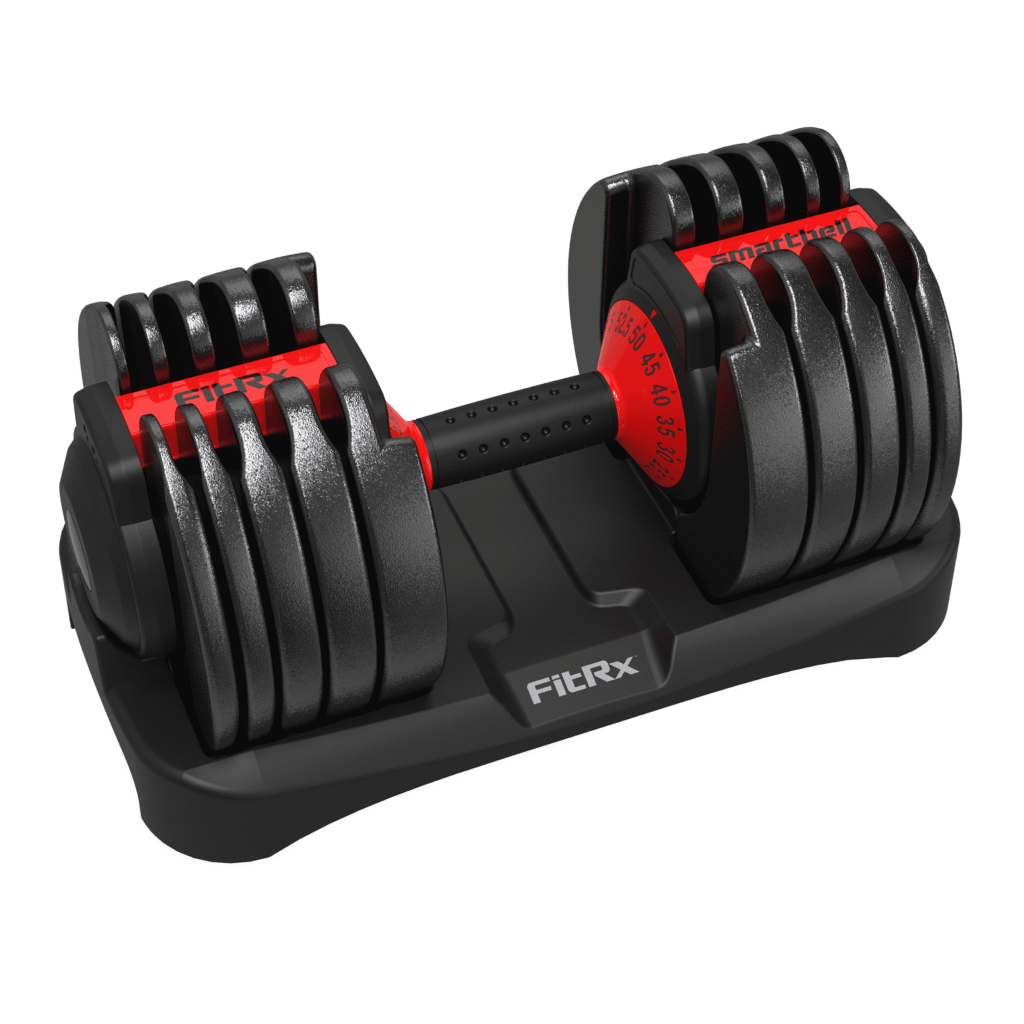
Why They’re a Game-Changer: They are the cornerstone of any serious strength training program. With a simple click or dial, you can switch from 5 lbs for warm-ups to 50 lbs (or more) for heavy presses. They replace up to 15 pairs of traditional dumbbells.
What to Look For:
- Mechanism: Look for a smooth and secure locking mechanism. You don’t want to worry about a plate falling on your foot. Brands like Bowflex, NÜOBELL, and Core Home Fitness are popular for a reason.
- Weight Range: A set that goes from 5 to 50 lbs is a fantastic starting point for most people. It provides enough room for you to grow into for years.
- Handle Feel: If you can, try to feel the grip. A comfortable, ergonomic handle makes a huge difference during a tough set.
Key Exercises:
- Goblet Squats
- Bench Press (paired with our next item)
- Dumbbell Rows
- Bicep Curls & Overhead Tricep Extensions
- Lunges
Piece #2: A Foldable, Adjustable Bench
Your dumbbells are only half the equation. An adjustable bench unlocks dozens of new exercises and ensures you’re performing them with proper form and support. It’s the command center of your workout space.
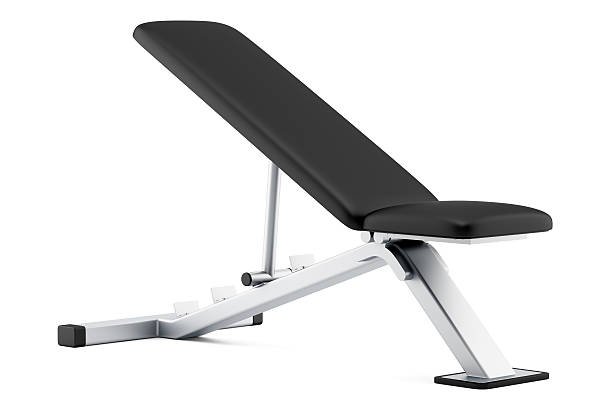
Why It’s a Game-Changer: A flat bench is good, but an adjustable bench that can go from flat to various incline positions is great. This allows you to target different parts of your chest, shoulders, and back more effectively. And the best part? Modern designs fold up and can be slid under a bed or into a closet.
What to Look For:
- Stability: This is non-negotiable. Look for a steel frame and a wide base. Read reviews focusing on how stable it feels during heavy lifts.
- Foldability: Check the mechanism. It should be easy to collapse and set up.
- Weight Capacity: Ensure it can handle your body weight plus the weight you plan to lift. A 500-600 lb capacity is a safe bet for most.
Key Exercises:
- Incline/Flat Dumbbell Press
- Supported Dumbbell Rows
- Bulgarian Split Squats
- Seated Shoulder Press
- Tricep Dips
Piece #3: Resistance Bands (Both Loop and Tube)
Don’t let their simplicity fool you. Resistance bands are one of the most versatile and underrated tools in fitness. They’re cheap, take up virtually zero space, and are perfect for everything from warming up to finishing a muscle group.
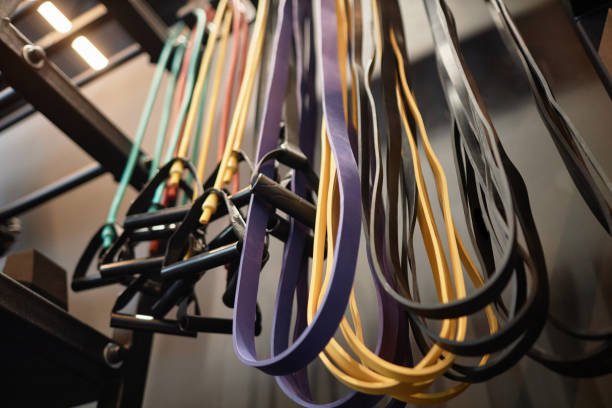
Why They’re a Game-Changer: Unlike free weights, bands provide variable resistance—the more you stretch them, the harder the exercise becomes. This is fantastic for joint health and muscle activation. They’re also perfect for travel, so your fitness routine never has to stop.
What to Look For:
- A Full Set: Get a set with varying levels of resistance. For loop bands (for pull-ups and legs), and tube bands with handles (for presses, curls).
- Quality Material: Look for durable, layered latex to prevent snapping.
Key Exercises:
- Loop Bands: Banded Pull-Aparts (for posture), Glute Bridges, Assisted Pull-Ups (looping over the bar), Adding resistance to push-ups.
- Tube Bands: Bicep Curls, Tricep Pushdowns (anchored to a door), Chest Press, Face Pulls.
Piece #4: A Doorway Pull-Up Bar
The pull-up is the undisputed king of upper-body bodyweight exercises. It builds your back, biceps, and grip strength like nothing else. A simple doorway pull-up bar turns any doorframe into a powerful workout station.
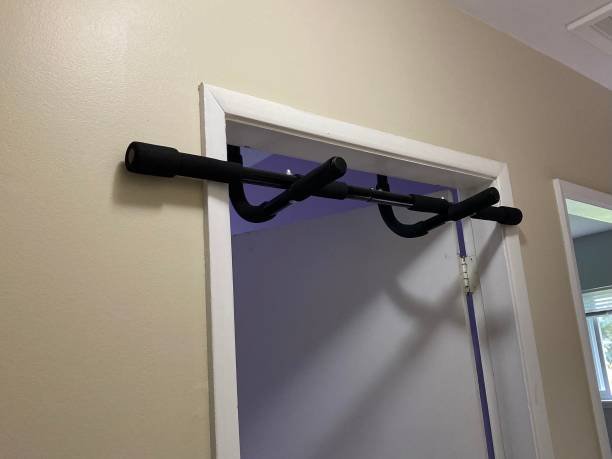
Why It’s a Game-Changer: It requires no floor space. When you’re done, you can just pop it off the door and slide it under your bed. It’s a powerful symbol: every time you walk through that door, you’re reminded of the strength you’re building.
What to Look For:
- Leverage-Based Design: Opt for the kind that uses your body weight to secure itself against the doorframe. These are generally safer and don’t require screws.
- Multiple Grips: Look for a bar that offers wide, narrow, and neutral grip options to target different muscles.
- Foam Padding: Ensure it has padding to protect your doorframe from scuffs.
Key Exercises:
- Pull-Ups (overhand grip)
- Chin-Ups (underhand grip)
- Neutral-Grip Pull-Ups
- Hanging Leg Raises (for core)
Piece #5: A Versatile Kettlebell
If dumbbells are for systematic, controlled strength, the kettlebell is for building explosive power, conditioning, and functional muscle. The unique offset handle challenges your body in a way dumbbells can’t.
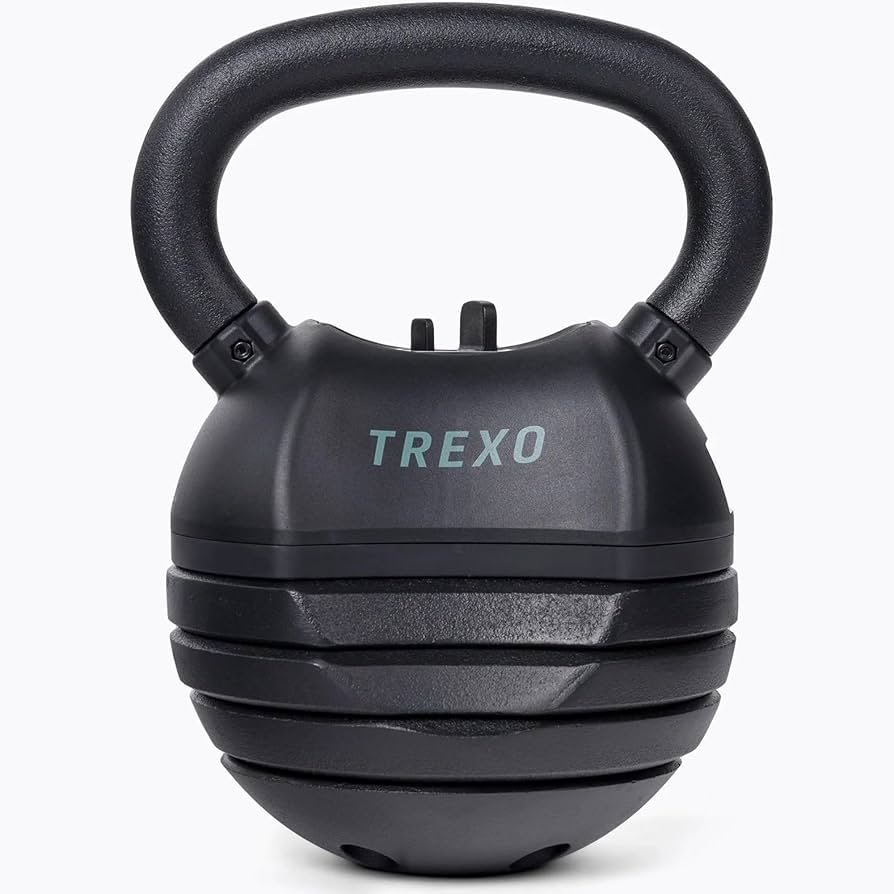
Why It’s a Game-Changer: A single kettlebell can provide a full-body workout. The ballistic nature of exercises like the kettlebell swing trains your muscles to work together, boosts your heart rate through the roof, and torches calories.
What to Look For:
- A Good Starting Weight: For men, a 16 kg (35 lbs) or 20 kg (44 lbs) kettlebell is a fantastic, versatile starting point for swings and goblet squats.
- Handle Texture: You want a smooth, comfortable handle without sharp seams that will tear up your hands. Powder-coated or competition-style kettlebells are excellent choices.
Key Exercises:
- Kettlebell Swings (the foundation)
- Goblet Squats
- Turkish Get-Ups (a full-body masterpiece)
- Cleans and Presses
Piece #6: A High-Quality Exercise Mat
This is about defining your space and providing comfort. A good mat protects your floor from sweat and dropped weights (within reason!), and it protects your joints during floor exercises.
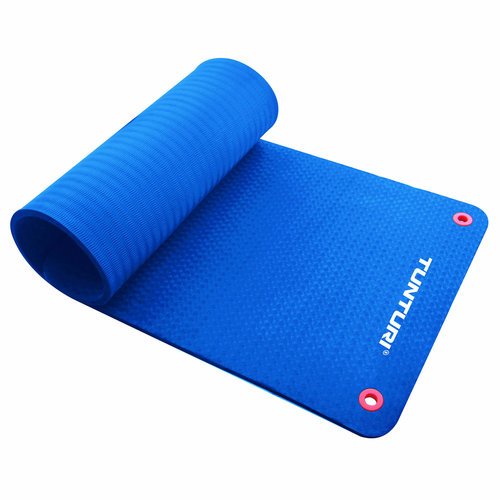
Why It’s a Game-Changer: Mentally, rolling out your mat signals the start of your workout. It’s your personal patch of ground dedicated to improvement. Practically, it makes core work, push-ups, and stretching infinitely more comfortable.
What to Look For:
- Thickness and Density: Don’t go for a flimsy yoga mat. Look for something a bit thicker (around 1/4 to 1/2 inch) made from high-density foam for better cushioning.
- Grip: It should be non-slip on both sides—one to grip the floor, the other to grip you.
Key Exercises:
- Push-Ups
- Planks and all core variations
- Stretching and mobility work
- Yoga / Pilates
Piece #7: A Speed Jump Rope
Looking for the most efficient cardio tool for a small space? Here it is. Jumping rope is a high-intensity, low-impact (when done correctly) workout that melts fat, improves coordination, and builds cardiovascular endurance.
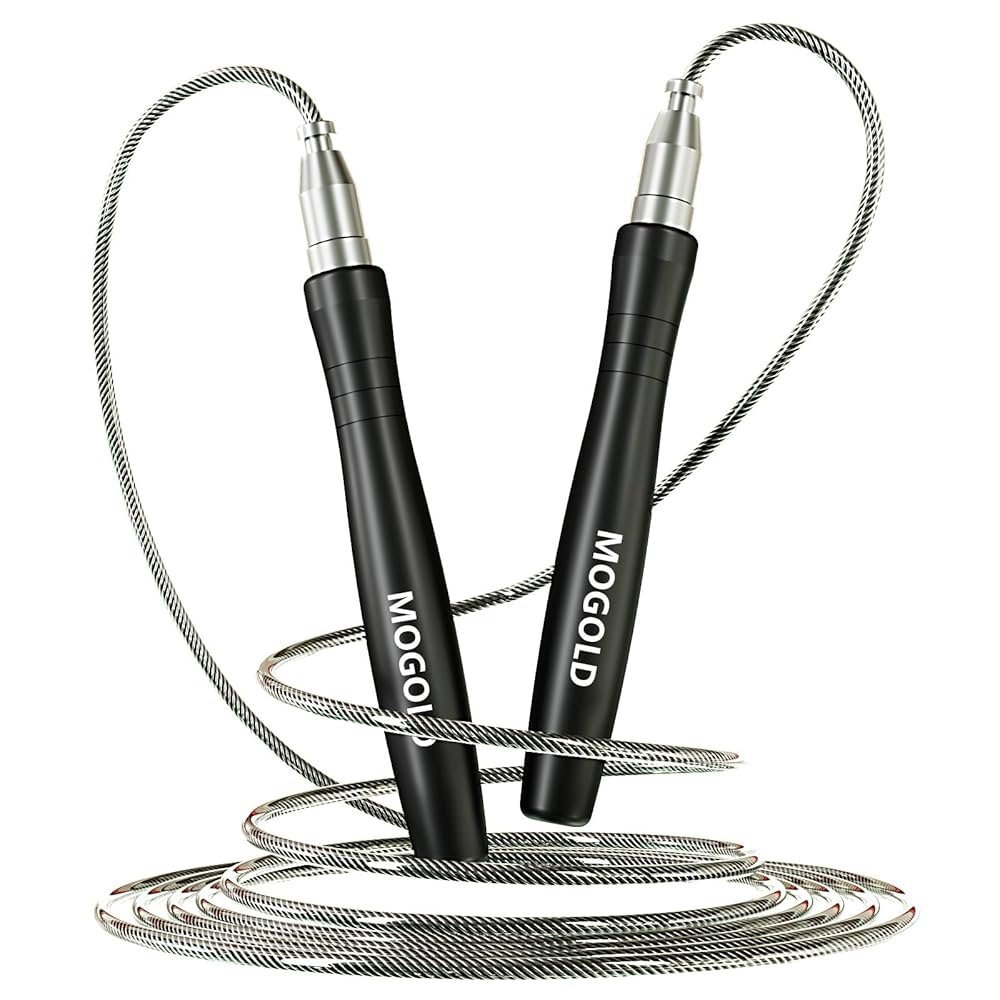
Why It’s a Game-Changer: Ten minutes of jumping rope can be equivalent to 30 minutes of jogging in terms of caloric burn. All you need is a patch of floor and enough ceiling clearance to swing the rope. It’s the ultimate cardio solution when you can’t go for a run.
What to Look For:
- Adjustable Length: This is crucial to fit the rope to your height.
- Ball Bearings: Look for handles with ball bearings for a smooth, fast rotation.
- Cable Type: A lightweight speed cable is great for speed, while a slightly heavier PVC rope gives better feedback for beginners.
Key Exercises:
- Basic Jumps
- High Knees
- Double Unders (an advanced goal to work towards)
Piece #8: An Ab Roller
Sit-ups are fine, but if you want to forge a truly strong, functional core that stabilizes your entire body, you need an ab roller. This simple wheel is a humble-looking but brutally effective tool.
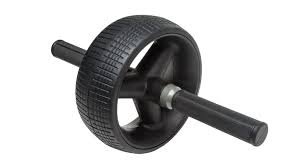
Why It’s a Game-Changer: The ab rollout is an “anti-extension” exercise. It forces your entire core—your rectus abdominis, obliques, and deep transverse abdominis—to fire like crazy to keep your spine from arching. This builds real, applicable strength. It takes up less space than a pair of shoes.
What to Look For:
- Sturdy Wheel: A wide wheel offers more stability for beginners, while a narrower wheel is more challenging.
- Comfortable Handles: You want something that provides a solid grip.
Key Exercises:
- Kneeling Ab Rollouts (start here!)
- Standing Ab Rollouts (the ultimate goal)
Piece #9: A Foam Roller
Your workout is only half the battle. Recovery is where you actually build muscle and prevent injury. A foam roller is your personal, on-demand deep-tissue massage therapist.
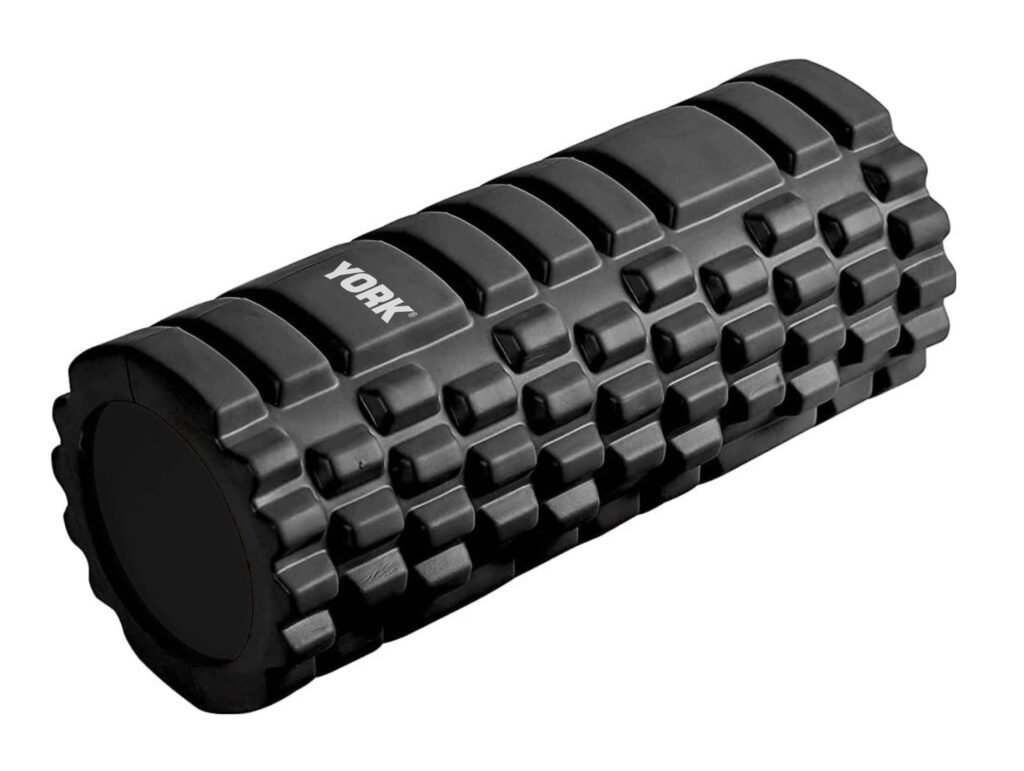
Why It’s a Game-Changer: Using a foam roller helps release muscle tightness and trigger points (knots), improves blood flow, and increases your range of motion. A 5-10 minute session after your workout or on a rest day can dramatically speed up recovery and reduce soreness.
What to Look For:
- Density: If you’re new to it, start with a softer, low-density roller. As you adapt, you can move to a firmer, high-density one.
- Surface: Some are smooth, while others have grids and knobs for more targeted pressure. A basic, smooth, high-density roller is a perfect place to start.
Key Areas to Roll:
- Thoracic Spine (mid-back) for posture
- Quads and Hamstrings
- Calves
- Lats (under your armpits)
Putting It All Together: Sample Workouts
Okay, you’ve got the gear. How do you use it? Here are two sample routines.
Workout A: Full-Body Strength (3x a week)
- Warm-up (5 min): Jump Rope (3 min), Banded Pull-Aparts (2 sets of 15)
- Goblet Squats (Kettlebell or Dumbbell): 3 sets of 8-12 reps
- Incline Dumbbell Press (Bench): 3 sets of 8-12 reps
- Pull-Ups (or Assisted with Bands): 3 sets to failure (as many reps as you can)
- Dumbbell Rows (Supported on Bench): 3 sets of 8-12 reps per arm
- Ab Rollouts (from knees): 3 sets of 8-15 reps
- Cool-down (5 min): Foam roll major muscle groups.
Workout B: HIIT & Core Blast (1-2x a week) Perform each exercise for 40 seconds, followed by 20 seconds of rest. Complete the entire circuit 3-4 times.
- Kettlebell Swings
- Push-Ups (on Mat)
- Jump Rope
- Dumbbell Lunges
- Plank (on Mat)
Frequently Asked Questions (FAQ)
We get it. Committing to a home gym setup, even a compact one, comes with questions. Here are the answers to some of the most common ones we hear.
1. This sounds great, but how much will this ultimate home gym setup actually cost?
This is the most practical question, and the answer is: it’s an investment that pays for itself. A typical gym membership costs anywhere from $30 to $70+ per month. That’s $360 to $840+ per year, every year.
You can acquire this entire setup for a one-time cost that often falls within that first-year range.
- Budget-Conscious Approach: By looking for sales, buying from reputable but less “big-name” brands, you could assemble a fantastic kit for around $400 – $600. The biggest cost will be the adjustable dumbbells, but they are worth it.
- Premium Approach: If you opt for top-tier brands like Bowflex or NÜOBELL for your dumbbells and a premium bench, your total investment might be closer to $800 – $1200.
Think of it this way: after the first year, your gym is essentially free for life.
2. I live in a really small studio apartment. Do I actually have room for this?
Yes! That’s the beauty of this specific setup. The total “storage footprint” of all 9 pieces is surprisingly tiny. The bench folds flat, the dumbbells sit in a corner, and everything else can be tucked into a single storage ottoman or under your bed.
Your “workout footprint” only needs to be the size of your exercise mat—roughly 6 feet by 3 feet. If you have enough space to lie down on the floor without hitting furniture, you have enough space to build a powerful physique.
3. I’m a complete beginner. Isn’t this equipment too advanced for me?
Not at all. In fact, this setup is perfect for beginners because every single piece is scalable.
- Adjustable Dumbbells: Start with 5 or 10 lbs. You have an entire rack at your disposal to progress slowly and safely.
- Pull-Up Bar: Can’t do a pull-up yet? No one can at first! Use your resistance bands to do “assisted” pull-ups, or start with “negative” pull-ups (jumping to the top and lowering yourself slowly).
- Kettlebell: Begin by mastering the goblet squat and two-handed swing with a lighter weight before moving on to more complex movements.
This gym grows with you. You won’t outgrow it in six months like some “beginner-only” kits.
4. What if I can’t afford adjustable dumbbells right now? Is there a cheaper alternative?
Absolutely. If the initial cost of adjustable dumbbells is a hurdle, the best alternative is to start with a combination of resistance bands and one or two kettlebells.
Get a full set of tube resistance bands with handles and a door anchor. This will allow you to replicate many pressing and curling movements. Then, buy a moderately heavy kettlebell (e.g., 16 kg / 35 lbs). The combination of kettlebell swings, goblet squats, and presses, supplemented with the resistance band work, will give you incredible full-body workouts while you save up for the dumbbells.
5. I have downstairs neighbors. How can I work out without making too much noise?
This is a crucial consideration for apartment living. The key is control and low-impact choices.
- Never Drop Weights: Get in the habit of controlling the weight on the way down. This is actually better for muscle growth anyway (it’s called eccentric training).
- Use a Thicker Mat: A good, thick exercise mat will absorb a lot of the sound and impact.
- Low-Impact Cardio: Instead of aggressive rope jumping, you can do bodyweight circuits with exercises like mountain climbers, squats, and shadowboxing. Kettlebell swings are also surprisingly quiet when done on a mat with proper form.
- Be Mindful of Timing: Maybe avoid your heaviest deadlift day at 11 PM on a Tuesday. Working out during normal waking hours is a simple courtesy.
Your Gym, Your Rules
Building your ultimate home gym in a small space isn’t about limitations; it’s about empowerment. It’s about creating a personal sanctuary where you can forge the best version of yourself, one rep at a time, on your own schedule.
This setup is more than just a collection of equipment. It’s a declaration. It’s a commitment to your health, your discipline, and your growth. You’ve removed the excuses. You’ve cleared the path. Now, the only thing left to do is walk it.
Now it’s your turn. What’s the one piece of home gym equipment you absolutely can’t live without? Or what’s the first piece you’re going to get after reading this? Drop a comment below and let’s build this community of strong minds and strong bodies together! Don’t forget to subscribe to MindGearMen.


